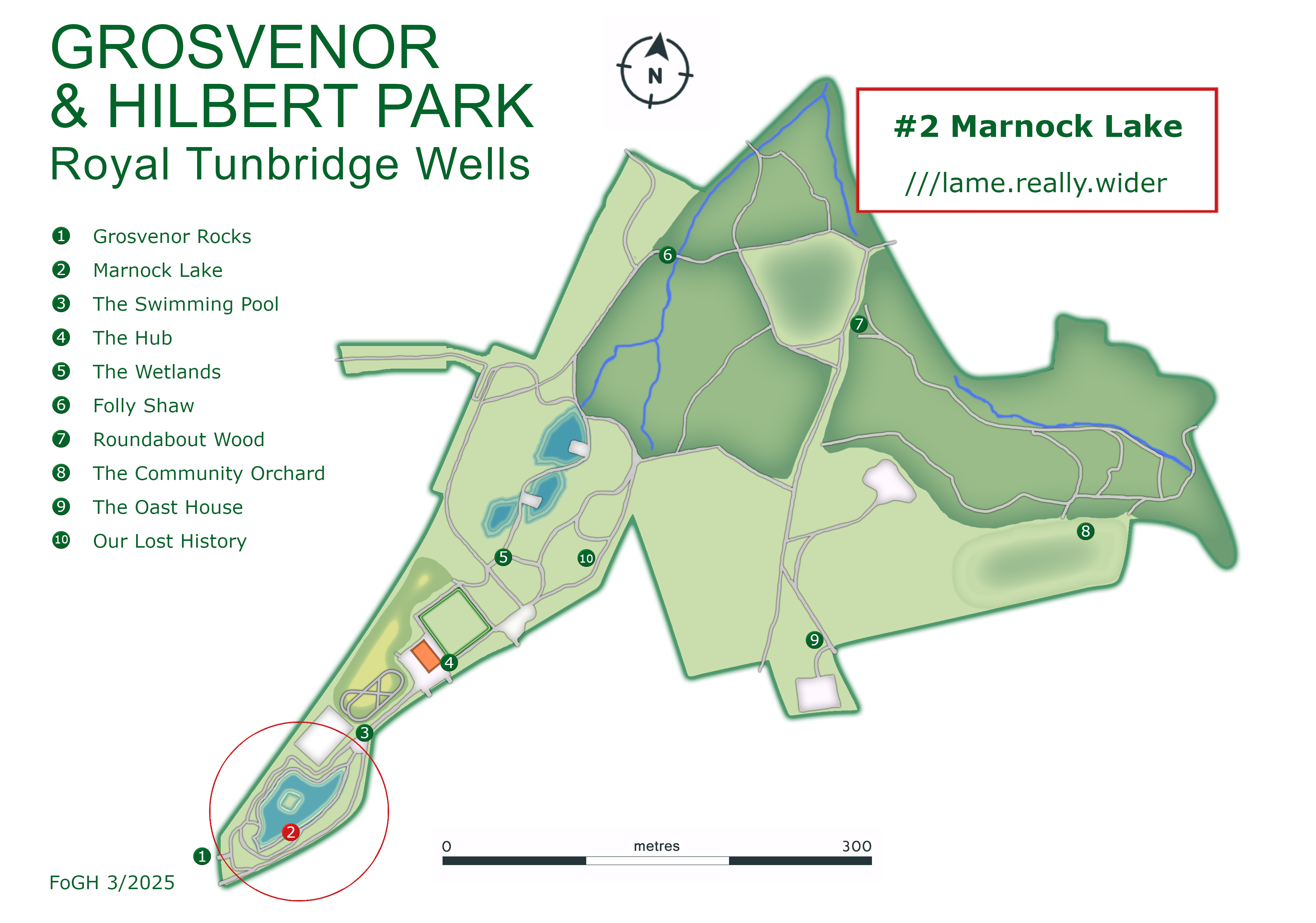
Marnock Lake: History
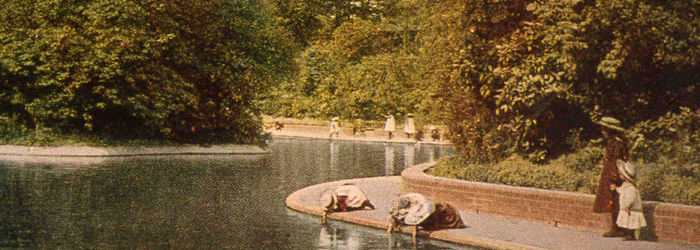
Originally part of the quarry and then the waterworks, 'Marnock Lake' is one of the original features of the Park. As you will see from the picture above, it is largely the same now as when first set out by Robert Marnock in 1889. It features a substantial 'duck Island' and the unique 'Dripping Wells' or grottoes.
The lake is fed by various springs, principally Jackwood Spring, which flows through the Dripping Wells. Other springs (unfortunately) flow across the path, and some have chalybeate (iron rich) water. You will see evidence of this on the surface of the lake - it is, of course, completely harmless. It was the amount of water flowing here that made this such an attractive option for the original waterworks.
If you're feeding the ducks, don't forget that, although they like bread, it's not very good for them and rotting bread can pollute the water. Suggested foods are peas, sweetcorn, cooked rice, birdseed, oats or chopped lettuce.
Just For Kids
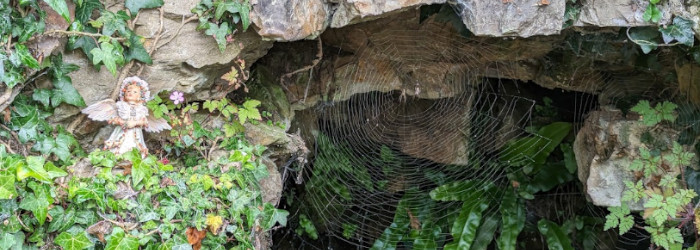
Can you count the ducks - there are often quite a few? How many different types of bird can you see?
There are a series of brass rubbing posts scattered around the park - the first sits above the grottoes on the higher ground and features a duck - go and find it!
Robert Marnock
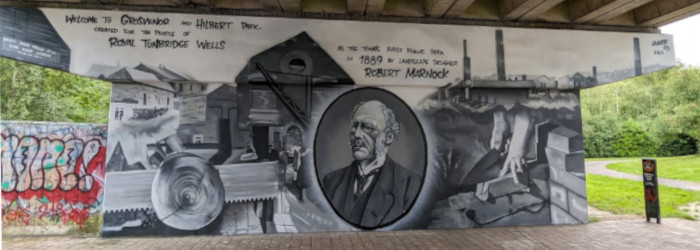
Robert Marnock was one of the outstanding garden designers of his generation and he planned the original Grosvenor part of the Park. He was an exponent of the Picturesque style, in which trees, shrubs and plants are positioned to display their full potential in scattered planting. Marnock's interpretation used carefully placed trees in open grassy areas, long structured views and 'natural' landscapes with flowing contours. In our Park, the landscaping of the lake, including the dripping Wells, the island and the curving paths are all from his original design. His work can also be seen in the sinuous paths around the wetland area.
Marnock Lake: Nature
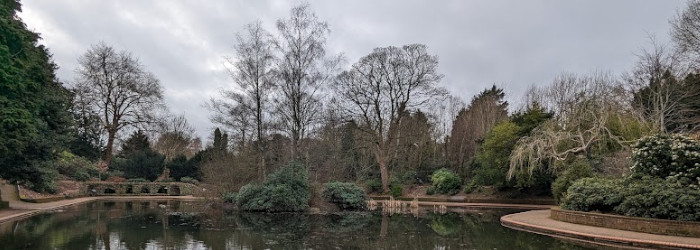
Mallards and moorhens are normally found on Marnock Lake. Black headed gulls often overwinter in the park and kingfishers can sometimes be found using the lake and wetland area during winter. Grey herons are occasional visitors, causing anxiety to local residents with fishponds! Grey wagtails have previously nested around the dripping wells during the summer. Sticklebacks can be spotted beneath the water surface and in the summer you might see colourful dragonflies and damselflies.
What Next: The Swimming Pool
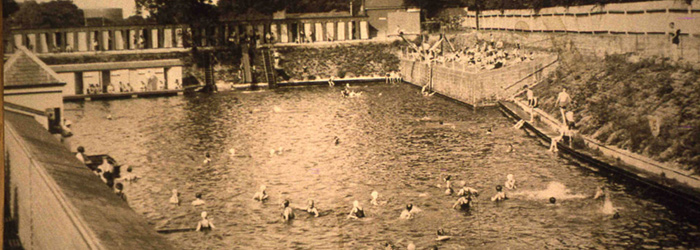
Walk around the lake and re-enter the park. Here you will see the play area, this was the site of the old swimming pool.
